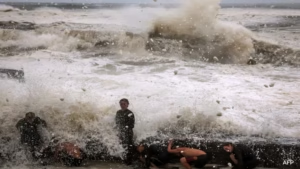Southern Queensland and northern New South Wales are expected to see significant disruptions due to Cyclone Alfred.

On the east coast, millions of Australians are preparing for the uncommon Cyclone Alfred, which is predicted to wreak havoc across northern New South Wales and southern Queensland. A location unprepared to withstand such tropical storms could receive heavy rainfall from Cyclone Alfred, which is anticipated to be the first such event in almost 50 years.
The cyclone, presently a Category 2 system — which depends on wind intensity — is uncommon and more strong because it is slow-moving and began much too sout
The department went on to say that it would probably “affect Double Island Point in Queensland to Grafton in New South Wales, including Brisbane, Gold Coast, Sunshine Coast, Byron Bay, and Ballina.”
Australia’s northern regions are usually hit by cyclones. The Gold Coast region was last struck by a cyclone in 1974.
Australia’s third most populated city is Brisbane, while the population density is higher in the south. This indicates that there are roughly 4 million people within Cyclone Alfred’s path, and the local infrastructure is not storm-resistant.
Additionally, the Bureau of Meteorology warned that Alfred might intensify into a Category 3 storm. The storm was expected to remain on the stronger end of Category 2 when it made landfall, though.
This suggests that areas of Queensland and New South Wales would be vulnerable to winds of up to 150 kmph and flood dangers in a large, heavily populated area, since rainfall totals of up to 600 mm are anticipated.
After making contact with an area of high pressure over the Tasman Sea, Cyclone Alfred took an unexpected path, turning westward.






